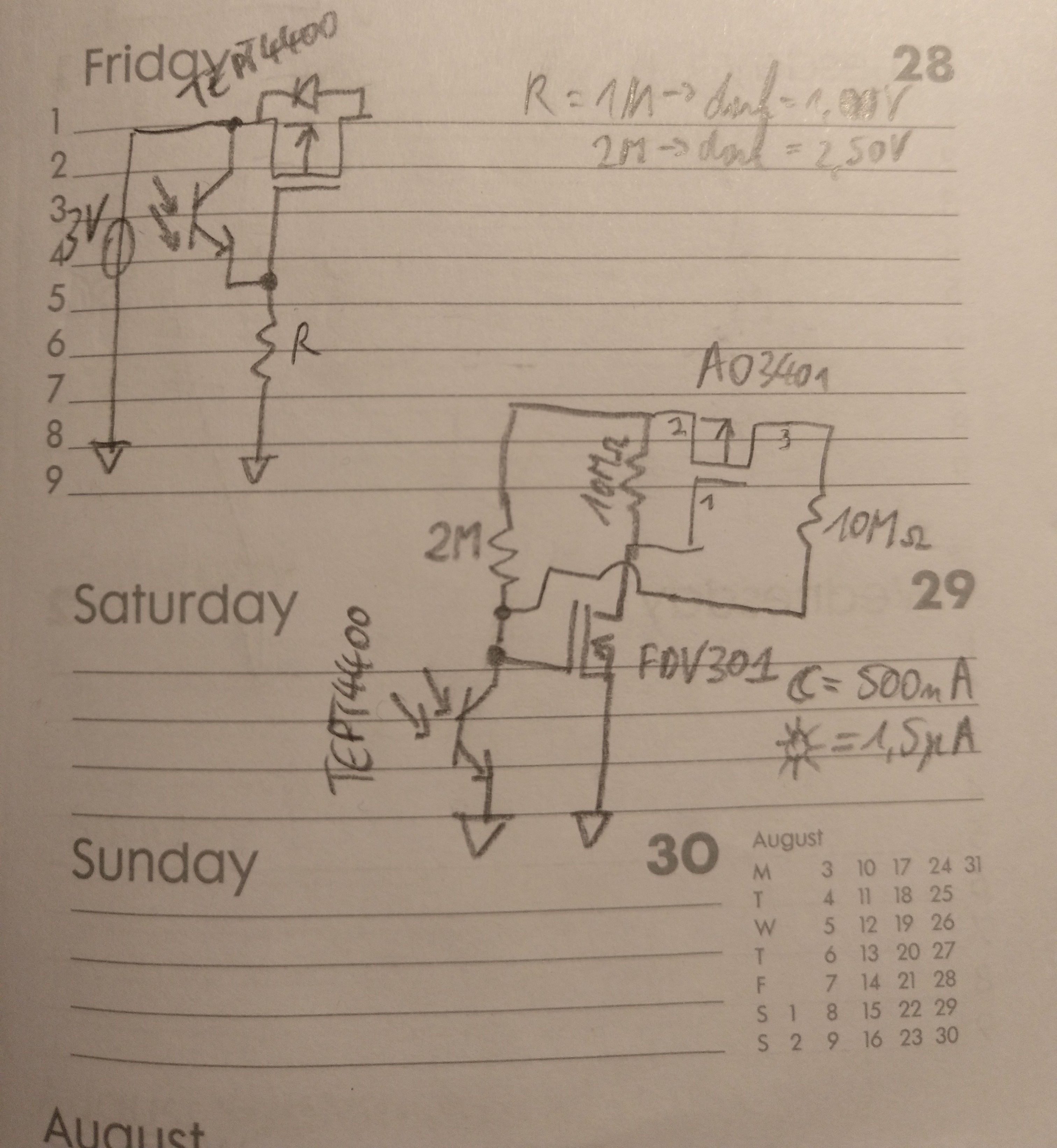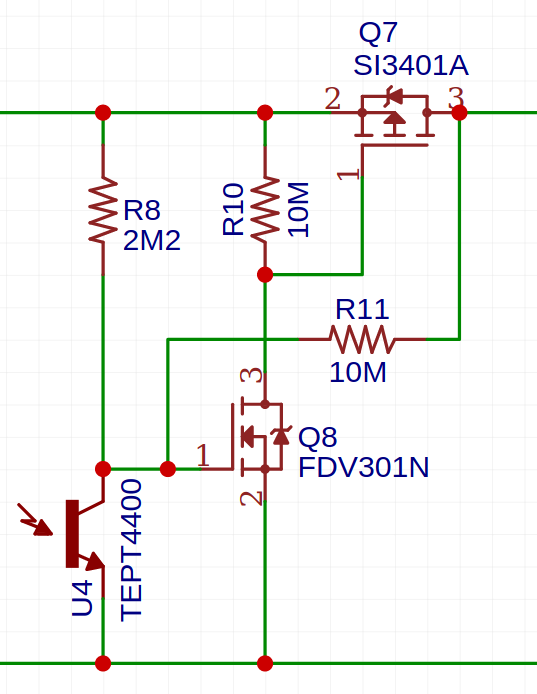Not much use is it to light an LED when there's already plenty of light around? So how to switch on the LED only when the ambient light level is low enough?
The two circuits mentioned below have been built on breadboard to test the ambient light switch functionality.
The current consumption of this ambient light switch adds considerably to the total current consumption of the design. Let's do a quick calculation:
- without ambient switch : assume 1.7µA continuous
- with ambient switch :
- day : 1.5µA (LED off)
- night : 2µA (LED on)
So what should be the night/day ratio to benefit from the ambient light sensor?
If there's less than 40% of night, then we start benefiting from this, but the gains are marginal. It doesn't weigh up against the extra cost, and required PCB area.
Simplistic approach
A photo transistor is connected across the drain-source of a PMOS. The disadvantage is that the transition of light to dark is not hard. There's a region where the PMOS isn't fully conducting.

Schmitt-trigger approach
By adding an extra NMOS resistor we can improve this circuit. The extra inverting effect of the FDV301 allows to make a feed-forward compensation with the 10Mohm resistor on the drain of the PMOS. As such, there's a hard switching threshold for the PMOS. The PMOS will be either OFF or ON, nothing in between.
Current consumption is 1.5µA (3V / 2Mohm) during daylight. At night, this drops to 300nA.

Solar cell
The solar cell could actually generate power when being lit, instead of consuming current as the other circuits do.
I haven't investigated yet how to use it as a switch. Energy could be harvested and stored in a supercap.
Interesting circuits to be found here.
 Christoph Tack
Christoph Tack
Discussions
Become a Hackaday.io Member
Create an account to leave a comment. Already have an account? Log In.